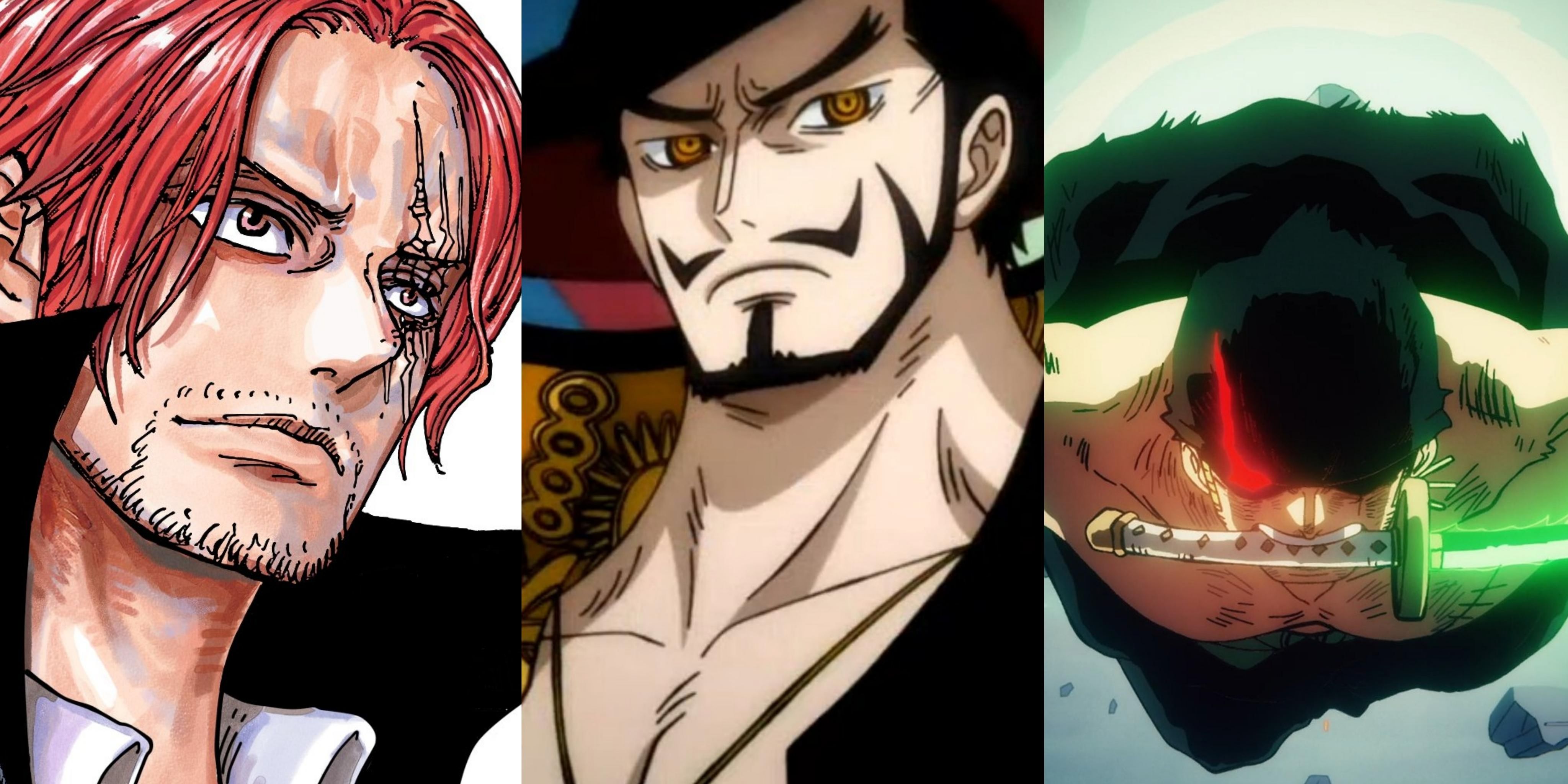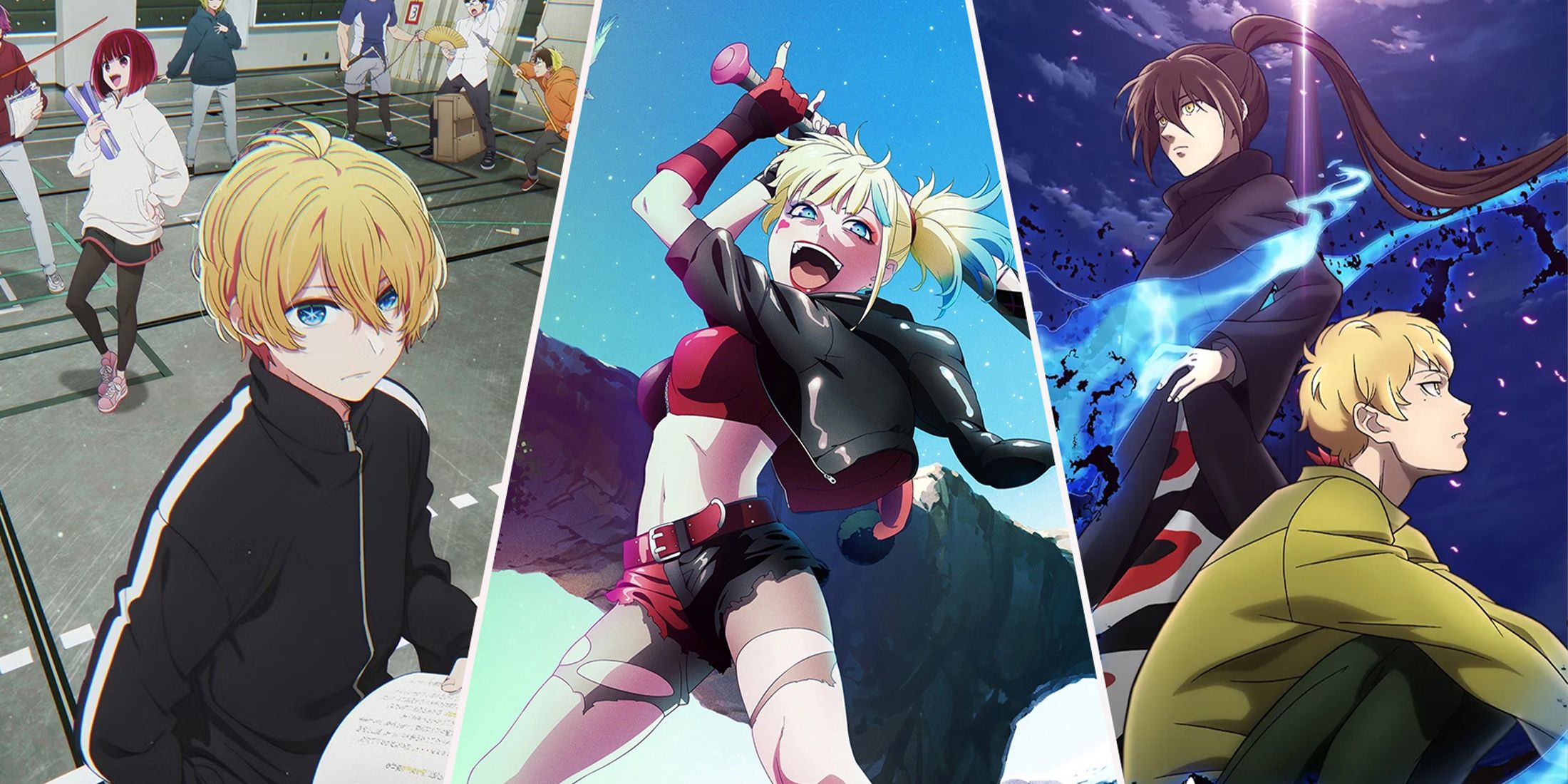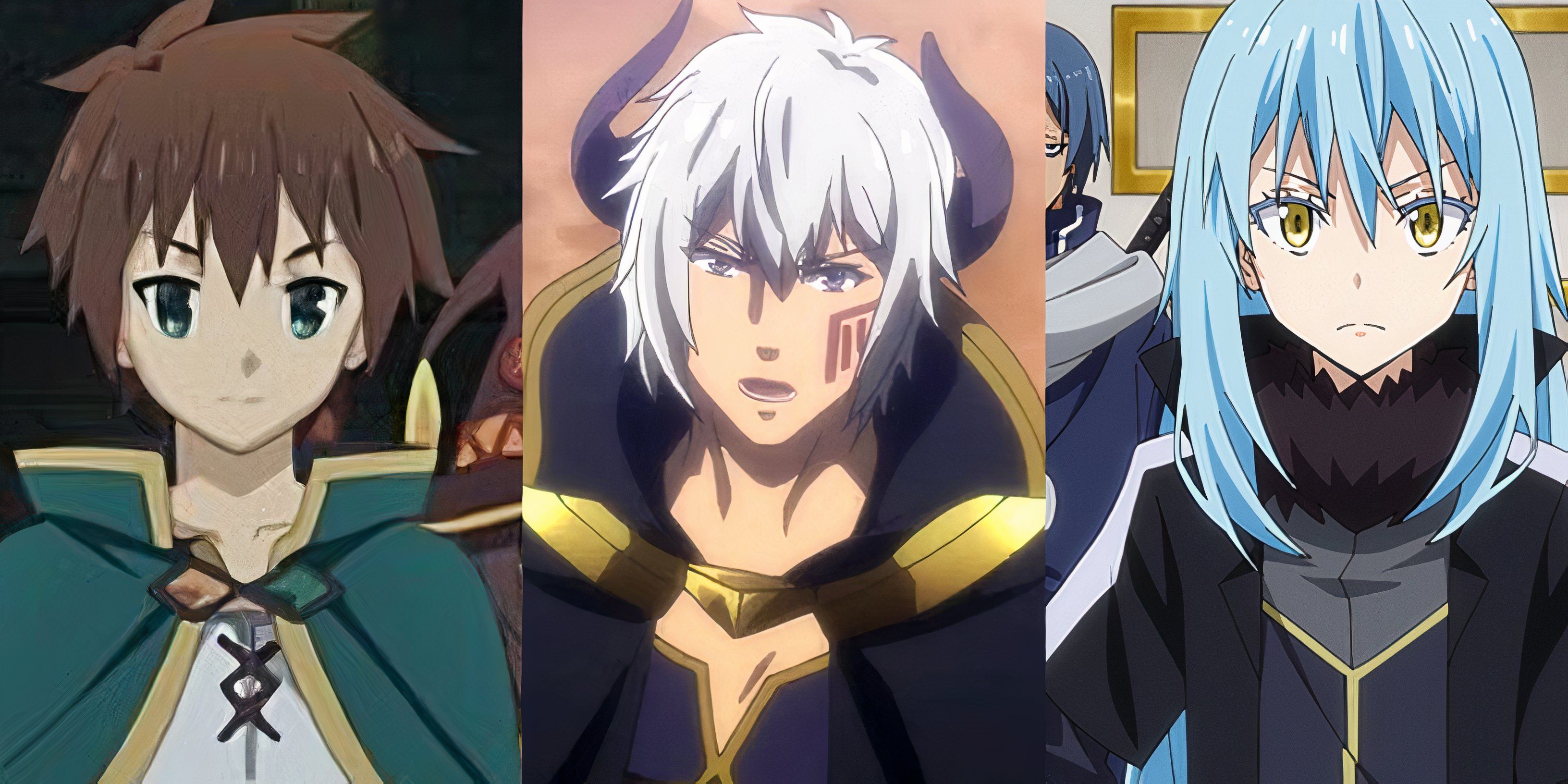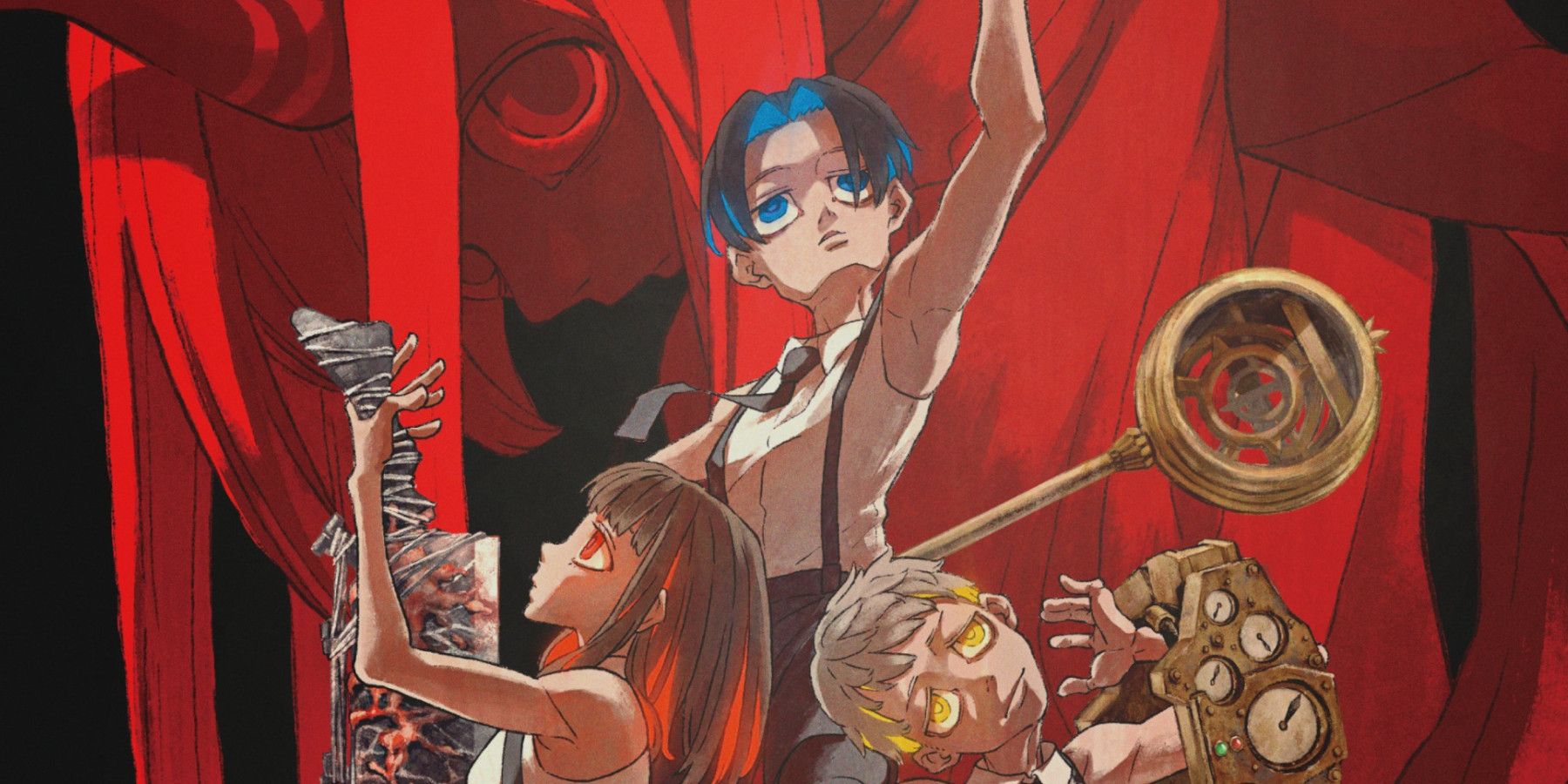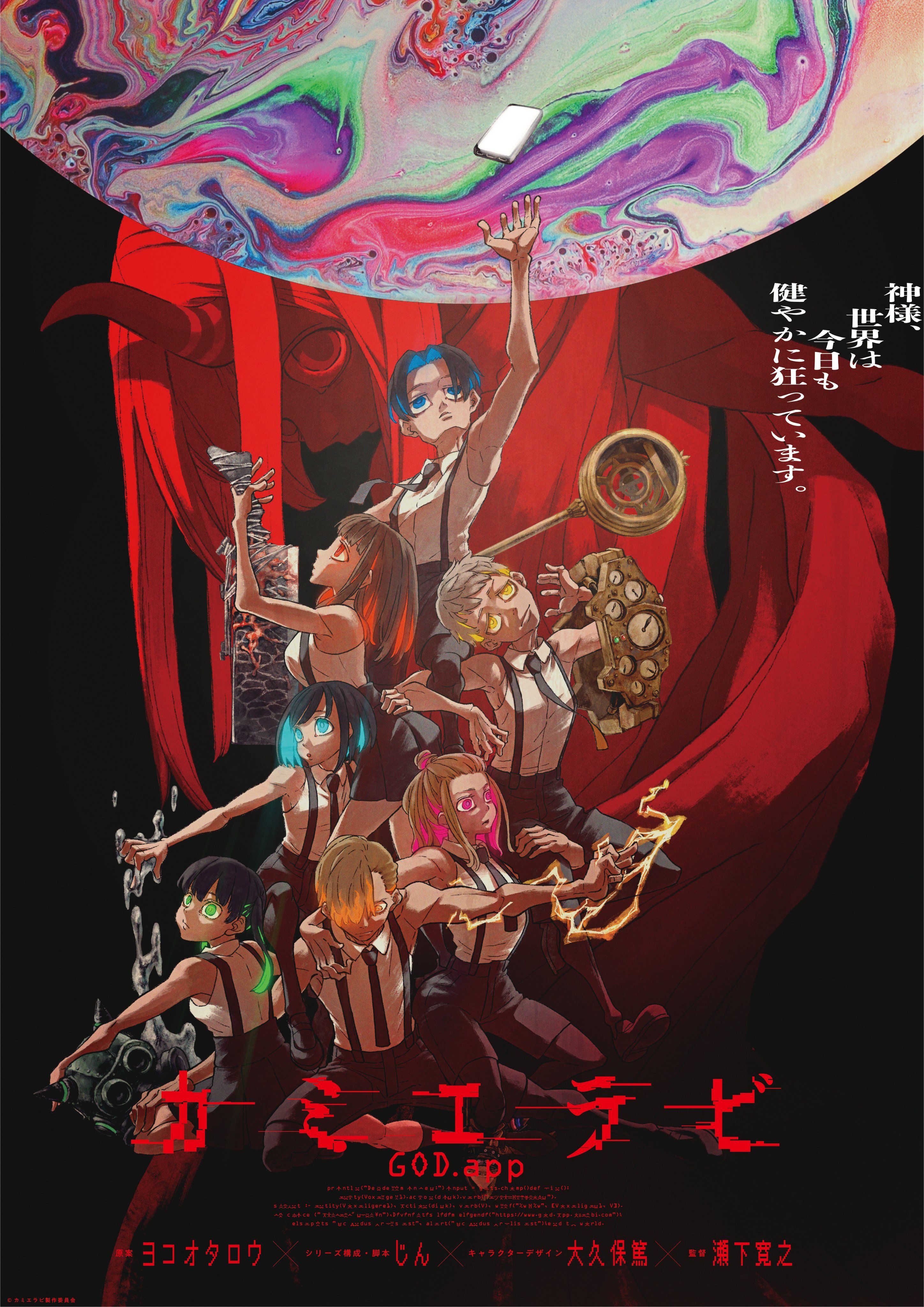Highlights
- KamiErabi GOD.app is a low-rated anime with big names attached to it, making the negative reception surprising.
- The story is intriguing, with elements of mystery and secrets, but the execution falls short due to poor storytelling.
- The visuals and directing in the anime are not consistent and hinder the impact of certain moments, making it mediocre overall.
Warning: This contains spoilers for KamiErabi GOD.app, Episode 1, "Unnoticed by Anyone, in the Place of Which Everyone Dreams," now streaming on Crunchyroll.
KamiErabi GOD.app is one of the lowest-rated anime of the Fall anime season, and normally a show like this wouldn’t inspire much curiosity to figure out why, were it not for the people who made it. This series, the debut work of studio UNEND, has some very big names attached to it, including Yoko Taro (Drakengard, NieR: Automata), making the negative reception all the more surprising.
KamiErabi is directed by Hiroyuki Seshita, the man behind some of Polygon Pictures’ biggest hits, from Ajin to Knights of Sidonia, to the Godzilla trilogy. The series is written by sound producer and Mekakucity Actors creator JIN, based on a concept by Yoko Taro, and with character designs by Soul Eater and Fire Force creator Atsushi Okubo.
Story vs Storytelling
KamiErabi is a crude and farcical spin on the death game genre following Goro Ono, a young man who mysteriously receives an app on his phone, telling him that he’s been “chosen.” When a personal and lewd wish of his is mysteriously granted the next day, he discovers that it’s because he’s been selected as a candidate in a death game to become God.
It’s not the most original premise and comes across as an attempt at a “new-age” Mirai Nikki. That being said, with something as formulaic (and arguably tired) as the death game genre, it’s the little things that make new stories stand out. KamiErabi’s tone does the story a lot of favors, from Goro’s irreverent opening monologue insulting the story to the crude but casual dialog that clashes with the over-the-top designs. Whether for reasons good or bad, it draws the viewer in.
A lot of reviews from viewers share a similar starting point: this show has some fascinating ideas. Goro’s power is strong, but it twists the karma of the world in order to grant him victory. In order to win, he has to make his life infinitely harder by changing the way people see and interact with him. It’s one of those simple give-and-take concepts that lends itself to a potentially captivating balance of triumph and tragedy.
There are also a lot of seeds planted early on that suggest that information is being withheld from the viewer, not just about the other characters, but Goro himself. With hints as to his mental health problems, it creates a sense of intrigue about his past and what secrets he’s hiding. In interviews, the creative staff describe the story as an “Obsession Battle Royale” centered around people’s deepest secrets, which “only God knows.”
But there’s a reason why a lot of the reviews that point these things out do so in such a selective manner. Saying a story has good ideas carries the connotation that it doesn’t quite execute them all that successfully, and that’s unfortunately the case here. There’s a distinction between story and storytelling, in that a strong story can be let down by bad storytelling just as a weak story can be elevated through clever storytelling.
It’s something that can apply to all filmmaking, but this concept feels especially relevant in animation, where so much of the art is about crafting each individual frame. The way that the lines, visuals, music, and directing coalesce to tell a story is just as important as the words that compose a script. KamiErabi’s story is vaguely intriguing, but it's hard to tell if it's good because, in all honesty, the storytelling is crippled by its visuals and directing.
It’s Not Because of the CGI (But It Also Is)
Every single time that an anime receives hate simply because it is 3D animated, there’s an impulse to come to these shows’ defense - one that is growing in newer audiences. It’s true that for a long time, anime studios just could not figure out how to properly implement CGI, especially when animating characters. But it’s also undeniable that the industry has evolved and that it has gotten better at making them. Studios like Orange are proof of this.
KamiErabi is not a bad-looking show based solely on the fact that it is 3D. It looks bad because it looks like a show from a timeline where the industry didn’t learn from past mistakes, and thus the 3D falls into a lot of the classic pitfalls. For one thing, the posing of the characters can look stiff and awkward as it tries to mimic 2D anime and its emphasis on dynamic character posing.
And yet, at other times, the character animation is so expressive it’s almost hypnotic. It’s just a matter of consistency. The color design and lighting aren’t too bad though, especially during the battles. The sunlight is extinguished, bathing the surroundings in shadow as each character’s individual color becomes far more pronounced. The background art is pretty good as well.
Okubo’s character designs look straight out of Fire Force, especially Akitsu with his mischievous look and sharp teeth. If only the characters weren’t wearing these weird Chippendales-esque school uniforms that really don’t blend with the setting, they might look cooler. As interesting as the key artwork for the series looks, one can’t help but think these designs would be served better with a different visual style, and it doesn’t need to be 2D to accomplish this.
The most surprising thing about the middling visual quality is that it comes from a director who was part of Polygon Pictures, a studio at the forefront of CGI anime. Back when shows like Knights of Sidonia and Ajin premiered, a lot of people were critical of the animation, but credit to the studio, they improved over the years. It’s baffling to see a show that looks so plain from a studio that was supposedly founded to push the boundaries further.
Looking past the visuals, the directing hinders moments where the story clearly wants to hook the viewer. For example, at the end of Episode 1, Goro’s karma is twisted to grant his wish, resulting in his mother becoming an alcoholic and him being labeled a pervert. But even by the end of Episode 2, it’s never explicitly told what Goro is meant to have done to earn such treatment. His wishes have consequences, but those consequences aren’t given proper weight.
KamiErabi GOD.appmight be overhated, but it is appropriately criticized. Its interesting ideas aren’t enough to save it, nor are its low points worthy of attacking the minds behind its creation. By all accounts, it’s simply mediocre, and in a time when audiences only respond to truly exceptional works to prove that 3D anime is valid, “mediocre” is practically a death sentence.
Source: Anime News Network
